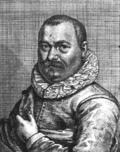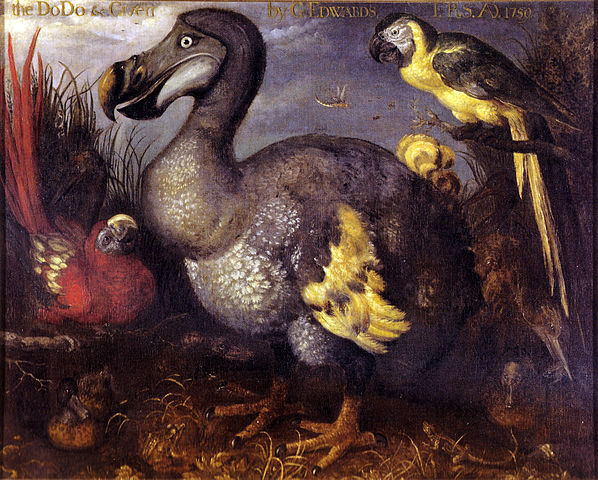 |
This is a file from the Wikimedia Commons. Information from its description page there is shown below.
Commons is a freely licensed media file repository. You can help.
|
Summary
| Artist |
Roelant Savery (1576–1639)   |
 |
| Alternative names |
Roelant Saverij, Roeland Savery, Roeland Maertensz. Savery,
Roelandt Savery, Roelandt Savry |
| Description |
Flemish painter, draughtsman, printmaker and court painter
|
| Date of birth/death |
1576 |
25 February 1639 (buried) |
| Location of birth/death |
Kortrijk |
Utrecht (city) |
| Work period |
from 1587 until 1639 |
| Work location |
Haarlem (1587), Amsterdam (1591), Prague (1603-1613), Vienna, Tirol (1606-1608), Amsterdam (1614-1618), Utrecht (city) (1618-1639) |
| Authority control |
|
|
| Description |
One of the most famous and often copied paintings of a Dodo specimen, as painted by Roelant Savery in 1626. The image came into the posession of the ornithologist George Edwards, who later gave it to the British Museum, hence the name. The bird swallowing a frog in the lower right may be the likewise extinct Red Rail. It has also been suggested that the two parrots are the extinct Lesser Antillean Macaw (left) and Martinique Macaw (right).
|
| Date |
1626 |
| Current location |
British Museum   |
 |
| Native name |
British Museum |
| Location |
London |
| Coordinates |
51° 31′ 10.00″ N, 0° 7′ 37.00″ W   |
| Established |
1753 |
| Website |
www.britishmuseum.org |
| Authority control |
|
|
|
|
| Source/Photographer |
http://julianhume.co.uk/wp-content/uploads/2010/07/History-of-the-dodo-Hume.pdf |
Licensing
This is a faithful photographic reproduction of an original two-dimensional work of art. The work of art itself is in the public domain for the following reason:
| Public domainPublic domainfalsefalse |
 |
This work is in the public domain in the United States, and those countries with a copyright term of life of the author plus 100 years or less. |
|
This file has been identified as being free of known restrictions under copyright law, including all related and neighboring rights.
|
The official position taken by the Wikimedia Foundation is that "faithful reproductions of two-dimensional public domain works of art are public domain, and that claims to the contrary represent an assault on the very concept of a public domain". For details, see Commons:When to use the PD-Art tag.
This photographic reproduction is therefore also considered to be in the public domain. Please be aware that depending on local laws, re-use of this content may be prohibited or restricted in your jurisdiction. See Commons:Reuse of PD-Art photographs.
|
| Annotations |
This image is annotated: View the annotations at Commons |
|
|
1113
598
207
302
1322
1071
File usage
The following pages on Schools Wikipedia link to this image (list may be incomplete):
This file contains additional information, probably added from the digital camera or scanner used to create or digitize it. If the file has been modified from its original state, some details may not fully reflect the modified file.
This selection has made Wikipedia available to all children. SOS Childrens Villages cares for children who have lost their parents. Our Children's Villages give these children a new home and a new family, while a high-quality education and the best of medical care ensures they will grow up with all they need to succeed in adult life. There are many ways to help with SOS Childrens Villages.





